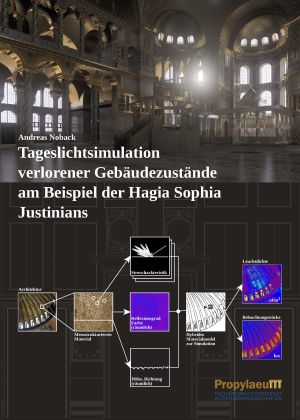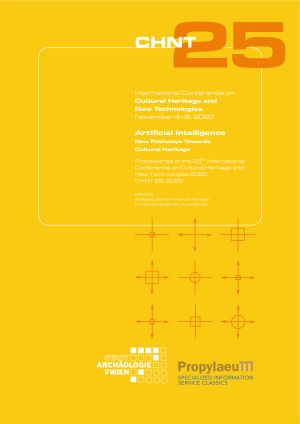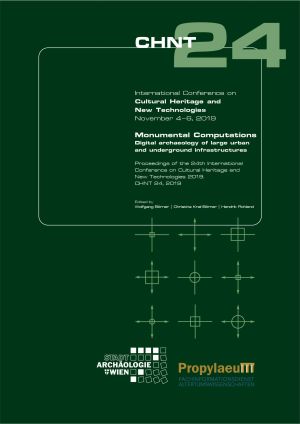Noback, Andreas
Tageslichtsimulation verlorener Gebäudezustände am Beispiel der Hagia Sophia Justinians
The interior lighting of Hagia Sophia has been praised since late antiquity but is no longer comprehensible in the preserved building state. By transferring methods of daylight simulation of modern buildings to historical research, it is possible to investigate the dynamic interplay of direct and diffuse lighting with the sparkle of the precious materials in the 6th century's state. In addition to its exemplary application, this work provides a theoretical framework for daylight simulation in the context of geometric reconstruction, the reconstruction of optical properties and perceptual-psychological analysis.
Supplementary data you find here: https://doi.org/10.11588/data/TONJFH
Artificial Intelligence: New Pathways Towards Cultural Heritage
The 25th international Conference on Cultural Heritage and New Technologies took place in 2020 in the city hall of Vienna under the headline “Artificial Intelligence – New Pathways Towards Cultural Heritage”.
The contributions deal with the application of computational approaches in all fields of cultural heritage, with a special emphasis on the utilisation of “Artificial Intelligence”. The topics include Remote Sensing, Data Acquisition and Modelling, and Methods for the analysis and presentation of digital data in archaeology and cultural heritage. The volume also contains Abstracts on the round table discussions held and the posters presented at the conference and a special session which was dedicated towards the 25th anniversary of the conference.
Monumental Computations: Digital archaeology of large urban and underground infrastructures
The international conference "Cultural Heritage and New Technologies" took place in 2019 on the theme "Monumental Computations - Digital archaeology of large urban and underground infrastructures" at the Vienna City Hall.
The conference papers address the challenges of large urban development projects for the responsible organizers, whose goal is to preserve the cultural heritage of the cities concerned as much as possible. In this context, computer-based approaches are indispensable in all steps of a large urban development project.









